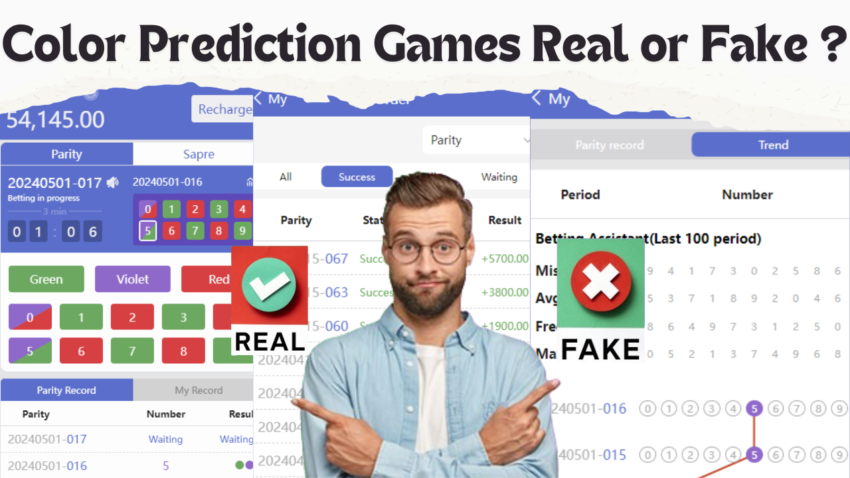In today’s fast-paced digital age, the advent of online gaming platforms has created a new phenomenon: color prediction games. These games promise rapid money with no effort, but the question remains: are they real or fake?
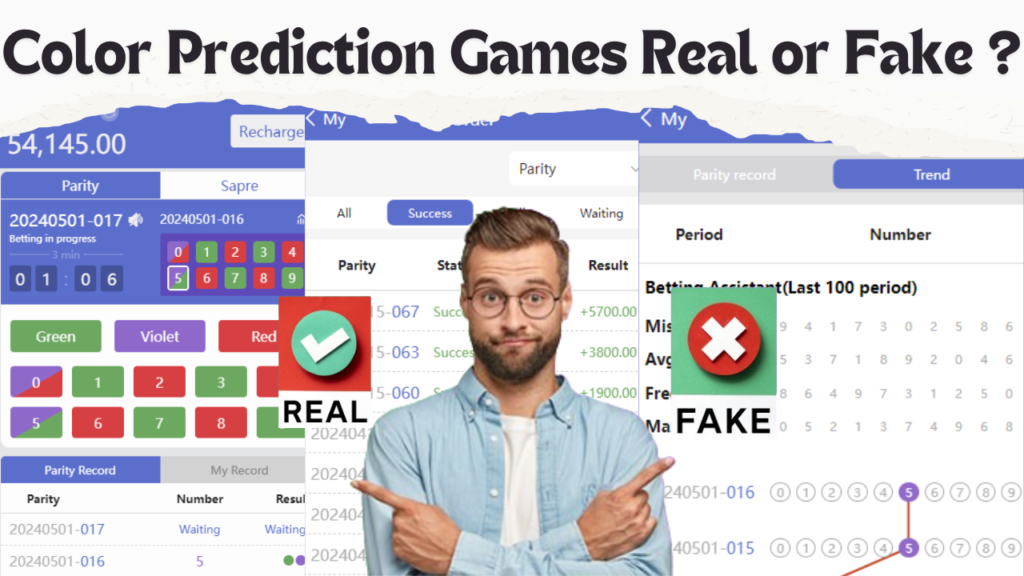
A closer look at color prediction games.
Exploring the Mechanics of Color Prediction
Let’s look at how color prediction games work. These games usually require predicting the outcome of a series of colors, which are generally represented by balls or cards. Players gamble on their predictions, expecting to win based on how accurate their guesses are.
The Psychology Behind Color Prediction.
We delve deeper into the psychology of color prediction. The human preoccupation with predicting the future extends back centuries, and it stems from our fundamental yearning for certainty in an uncertain environment. prediction games appeal to this natural desire, providing a tantalizing glimpse into what the future may bring.
Color Prediction Games: Are They Real or Fake? Distinguishing Fact from Fiction
Dispelling Myths About Color Prediction

Are color games actually capable of foretelling the future, or are they just complex hoaxes? Let’s address some popular myths about these games.
Myth 1: Guaranteed Wins
Contrary to popular assumption, color prediction do not guarantee success. While some may have occasional triumphs, the ultimate outcome is determined by chance rather than any inherent predictive power.
Myth 2: Insider Secrets
There’s a common misconception that insiders have hidden tactics for winning color prediction games. In actuality, victory in these games is very unpredictable and cannot be reliably predicted using insider information.
Examining the Science Behind Color Prediction
To appreciate the validity of color prediction, it is necessary to analyze the scientific concepts at play. While color patterns may appear to follow obvious trends, they are ultimately determined by random chance.
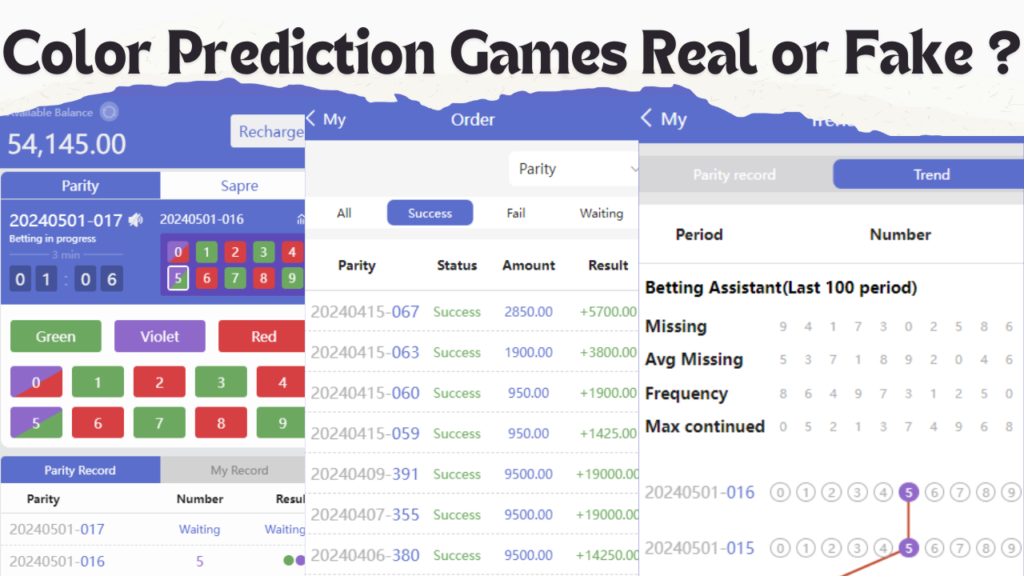
Probability and Randomness
Color prediction games are based on probability and randomness, which makes the outcomes unpredictable and independent of previous results. Each color pick is made randomly, with no regard for previous events.
Confirmation Bias
Human perception is prone to confirmation bias, which causes people to perceive patterns when none exist. In the case of color prediction, this bias may add to the appearance of predictive accuracy.
Analyzing Real-World Examples: Case Studies in Color Prediction.
Case Study 1: Online Color Prediction Platforms.
Online color prediction platforms have been popular in recent years, attracting a wide range of participants. While some may highlight their success stories, the reality frequently falls short of the lofty promises offered by these platforms.
Case Study 2: Historical Precedents
Throughout history, different types of divination and fortune-telling have captured the human imagination. Despite the inherent ambiguity, the appeal of predicting the future has persisted from ancient oracles to modern psychics.
Risks and Rewards: Proceeding with Caution
The Pitfalls of Color Prediction Games
It’s crucial to acknowledge the risks associated with participating in color prediction games. These include:
- Financial Losses: Betting on color predictions can lead to financial losses, especially when approached without caution.
- Psychological Impact: Excessive engagement with color prediction can foster a dependency on chance-based outcomes, potentially leading to detrimental psychological effects.
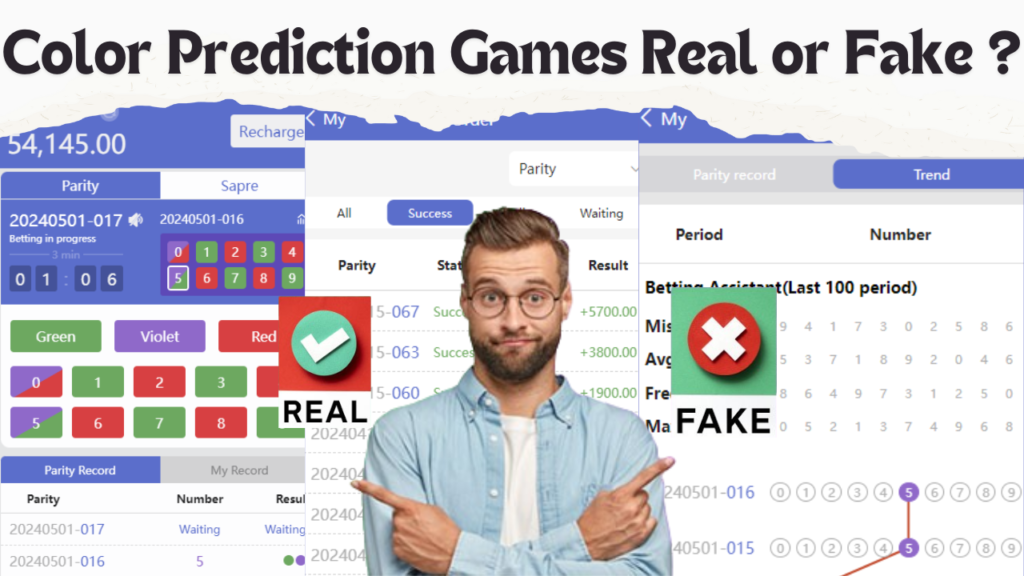
Navigating Ethical Considerations
The ethical implications of color prediction games should be carefully considered. While they may provide amusement for some, there are concerns about their propensity to abuse vulnerable people and propagate unrealistic expectations.
Conclusion: Truth Behind Color Prediction Games
Finally, there is no definite response to the question of whether color prediction are real or phony. While proponents may claim efficacy, a closer look demonstrates the influence of chance and human perception in affecting outcomes. As we manage the complexities of this phenomenon, let us approach with wisdom and a readiness to accept uncertainty.
Are Color Prediction Games Real or Fake? The Final Verdict
Finally, the verdict remains unclear, with the truth falling somewhere between belief and doubt. Color prediction, whether considered as fun diversions or cautionary stories, continue to captivate and intrigue, prompting us to contemplate the mysteries of fate and chance.
Read Also :- Quickly and Easy Video editing use Mast App in 2024
FAQs: Addressing Common Questions
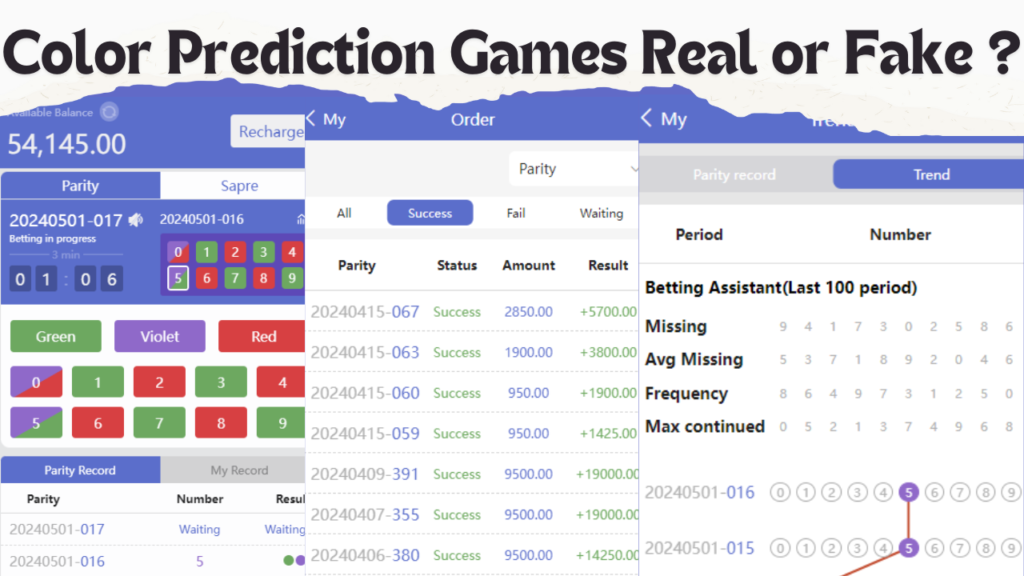
Q1: Can color prediction games accurately predict the future?
A1: Color prediction rely on chance rather than genuine predictive abilities, making accurate future predictions improbable.
Q2: Are there strategies for increasing success in color prediction games ?
A2: While some may claim to possess winning strategies, outcomes in color prediction games are ultimately unpredictable and cannot be reliably influenced.
Q3: Are color prediction games ethical ?
A3: Ethical considerations surrounding color prediction games warrant careful examination, particularly concerning their potential to exploit vulnerable individuals.
Q4: What are the risks of participating in color prediction games ?
A4: Risks include financial losses and potential psychological impacts resulting from excessive engagement with chance-based outcomes.
Q5: Do color prediction games have historical precedents ?
A5: Yes, various forms of divination and fortune-telling have existed throughout history, reflecting humanity’s enduring fascination with predicting the future.
Q6: Can color prediction games be addictive ?
A6: Excessive engagement with color prediction games can foster dependency and may lead to addictive behaviors, necessitating caution and moderation.
If You Like this article Please Comment
Yo! Don’t miss out – tap to join our Whatsapp Channel 📲 and get all your daily scoops in one spot!

Owner & Author – Jammu Deals Automobile enthusiast and founder of Jammu Deals. Sharing trusted updates, tips, and insights on cars, bikes, and the latest in the auto world.

